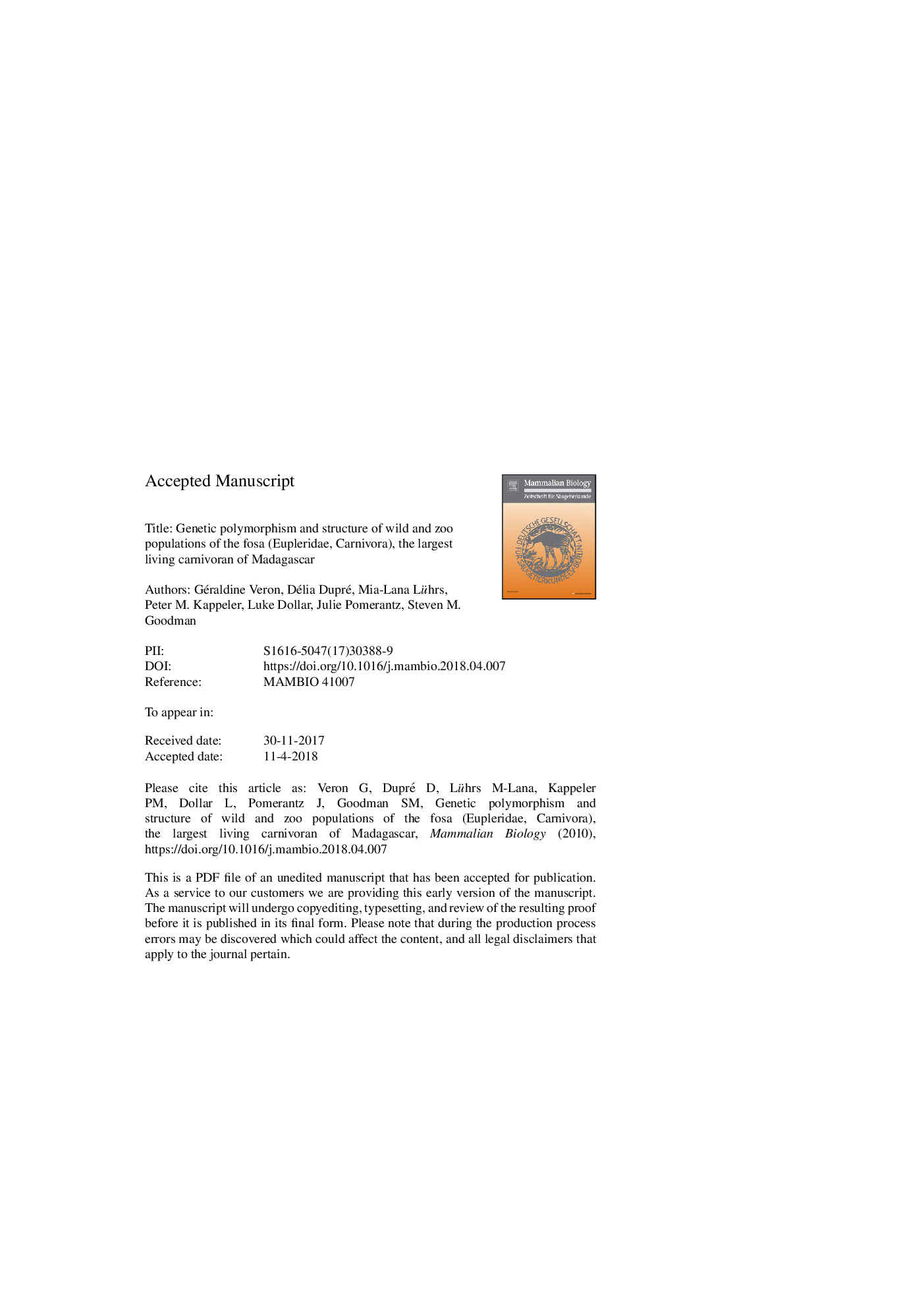| Article ID | Journal | Published Year | Pages | File Type |
|---|---|---|---|---|
| 8475527 | Mammalian Biology - Zeitschrift für Säugetierkunde | 2018 | 31 Pages |
Abstract
Cryptoprocta ferox, or fosa, is the largest living endemic carnivoran of Madagascar, with presumably high dispersal capacity, and for which no broad scale phylogeographic study has been conducted to date. This species is considered “Vulnerable” by the IUCN and the subject of a captive breeding program; approximately 113 individuals are held in 57 zoos. The aim of this study was to examine the genetic structure and polymorphism within both captive and wild populations, to determine possible lineage variation, and to make recommendations for the captive breeding program. For this purpose, we analyzed three mitochondrial (Cytochrome b, ND2, Control Region) and one nuclear (Beta-fibrinogen intron 7) markers. The results showed an overall low level of genetic polymorphism, likely related to its dispersal capacity, and some genetic structure possibly associated with geographical barriers, such as large rivers. The genetic diversity of the captive population was greater than that of wild individuals included herein, suggesting that the captive population encompasses a considerable proportion of the genetic diversity of the species. This genetic variability is presumably the consequence of frequent imports of wild animals into zoos from different areas of Madagascar, and subsequent exchanges between zoos. Based on the low overall genetic polymorphism of the species and the absence of deeply divergent lineages, we recommend the continued mixing of captive animals. Our results may help the management of the fosa in the wild and in captivity, which is crucial for a species that faces many threats in the wild, in particular habitat degradation and hunting pressure. In any case, enhanced protection of the species and its forested habitat is urgently needed.
Keywords
Related Topics
Life Sciences
Agricultural and Biological Sciences
Animal Science and Zoology
Authors
Géraldine Veron, Délia Dupré, Mia-Lana Lührs, Peter M. Kappeler, Luke Dollar, Julie Pomerantz, Steven M. Goodman,
